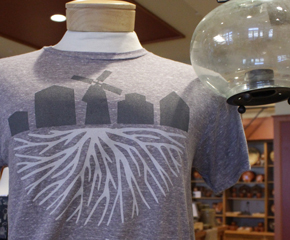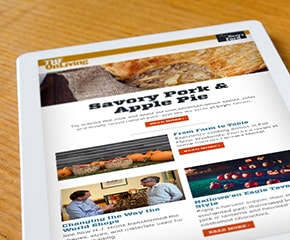
National Historic Vehicle Register
Daily Activities at National Historic Vehicle Register
While there are no scheduled activities today, be sure to see our complete activities listing for upcoming offerings.
Explore a rotating collection of culturally significant vehicles from the National Historic Vehicle Register, powered by the Hagerty Drivers Foundation, at Henry Ford Museum of American Innovation.
The National Historic Vehicle Register was created in 2013 in partnership with the U.S. Department of the Interior’s Historic American Engineering Record. The register is a thorough record of the nation’s most significant vehicles based on the association of four criteria at a national, regional or local level. Archived in the Historic American Engineering Record at the Library of Congress to ensure the perpetuity of our automotive past, the register has four major components:
- Written histories detailing significant provenance and condition
- Detailed photography
- 3D scanning
- Documentary videos
How are 3D scans of each vehicle on the National Historic Vehicle Register created? Watch this clip from The Henry Ford's Innovation Nation to find out.
Learn More
Current Featured Vehicle:
1937 Cord 812 Phaeton Convertible Owned by Amelia Earhart
Added to the National Historic Vehicle Register: 2023
Amelia Earhart acquired this Cord 812 Phaeton less than a year before she, navigator Fred Noonan and her Lockheed 10E Electra disappeared over the South Pacific in 1937. In September 1936, Earhart was famously photographed standing with the Cord and the airplane she would ultimately take on her final flight.
Earhart was well known for her affection for automobiles throughout her life. Her first sports car was a 1923 Kissel Gold Bug that she took on a cross-country road trip with her mother, stopping at various national parks along the way. In the early 1930s, she worked as a spokesperson for Terraplane, helping launch the brand's aviation themed car line.
Her husband, George Putnam, sold the Cord shortly after Earhart's disappearance and the Phaeton passed through a number of owners throughout the decades. It was eventually disassembled and split up across the country. After decades of research, travel, and acquiring the original components, in 2004, the car's body, frame, and engine were finally reunited by collector Ray Foster who sold it to its current owner, The JBS Collection. In 2018, The JBS Collection commissioned noted marque experts LaVine Restorations Inc. to return the car to its original specifications with a restoration that has captured numerous awards.
Photos provided courtesy of The Hagerty Drivers Foundation and The JBS Collection.




